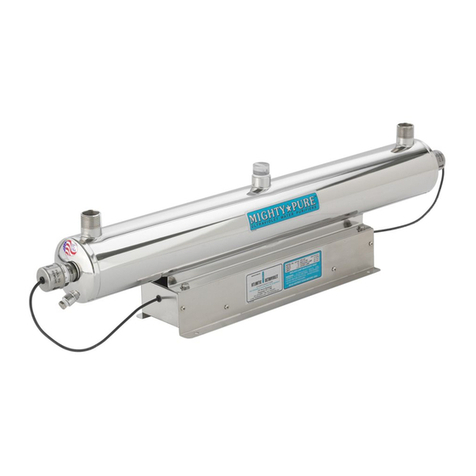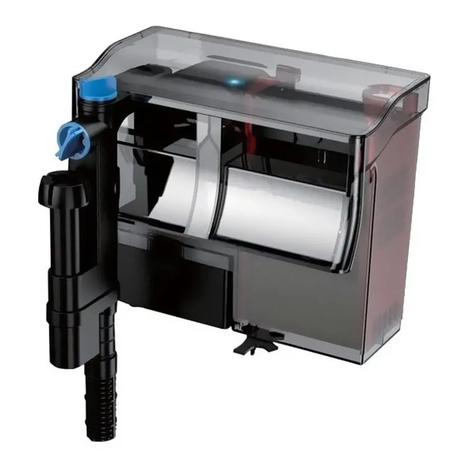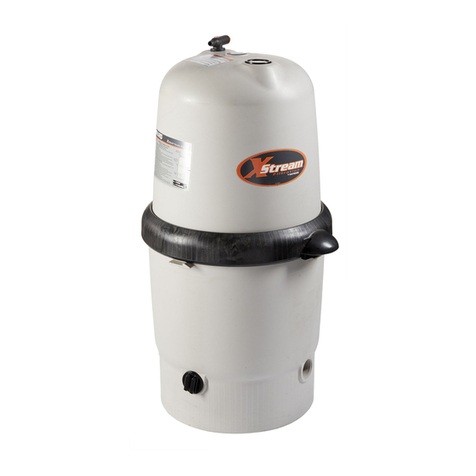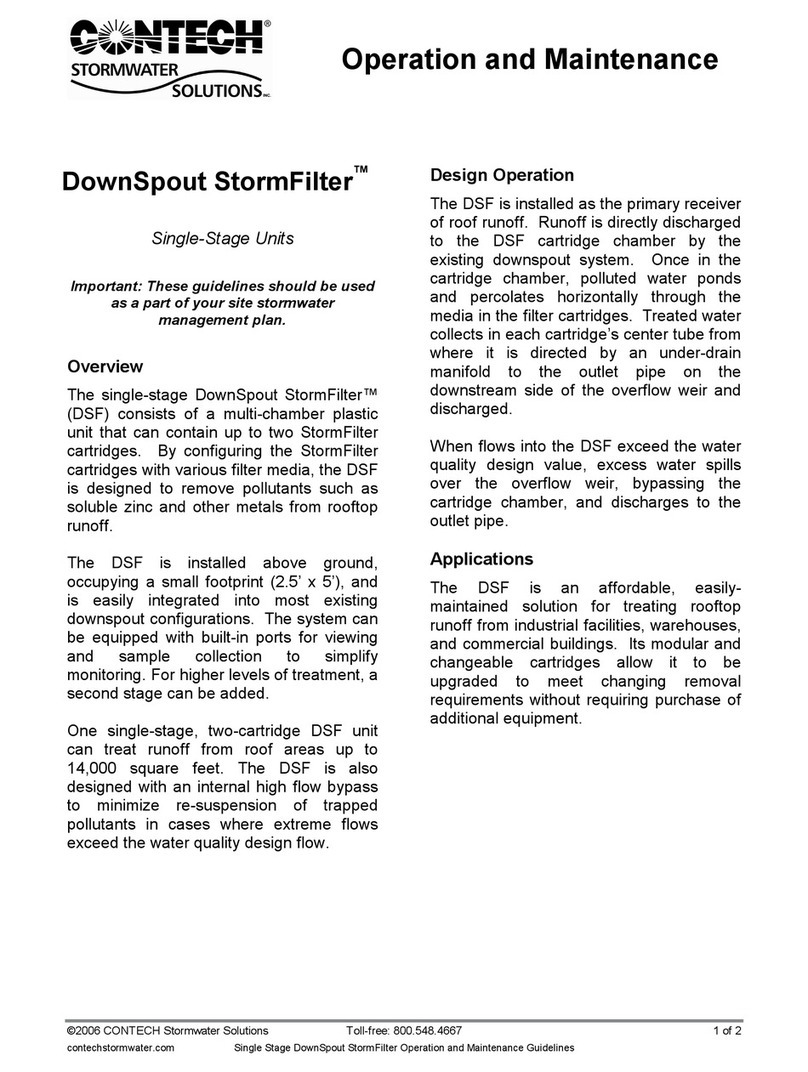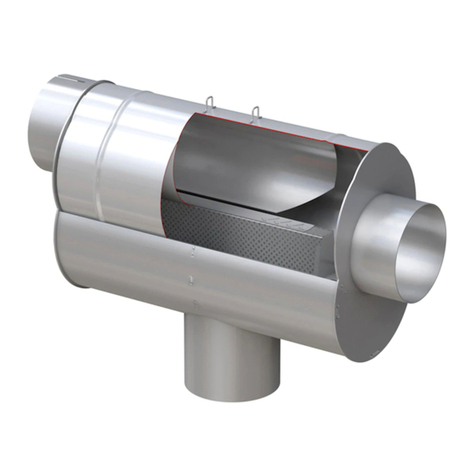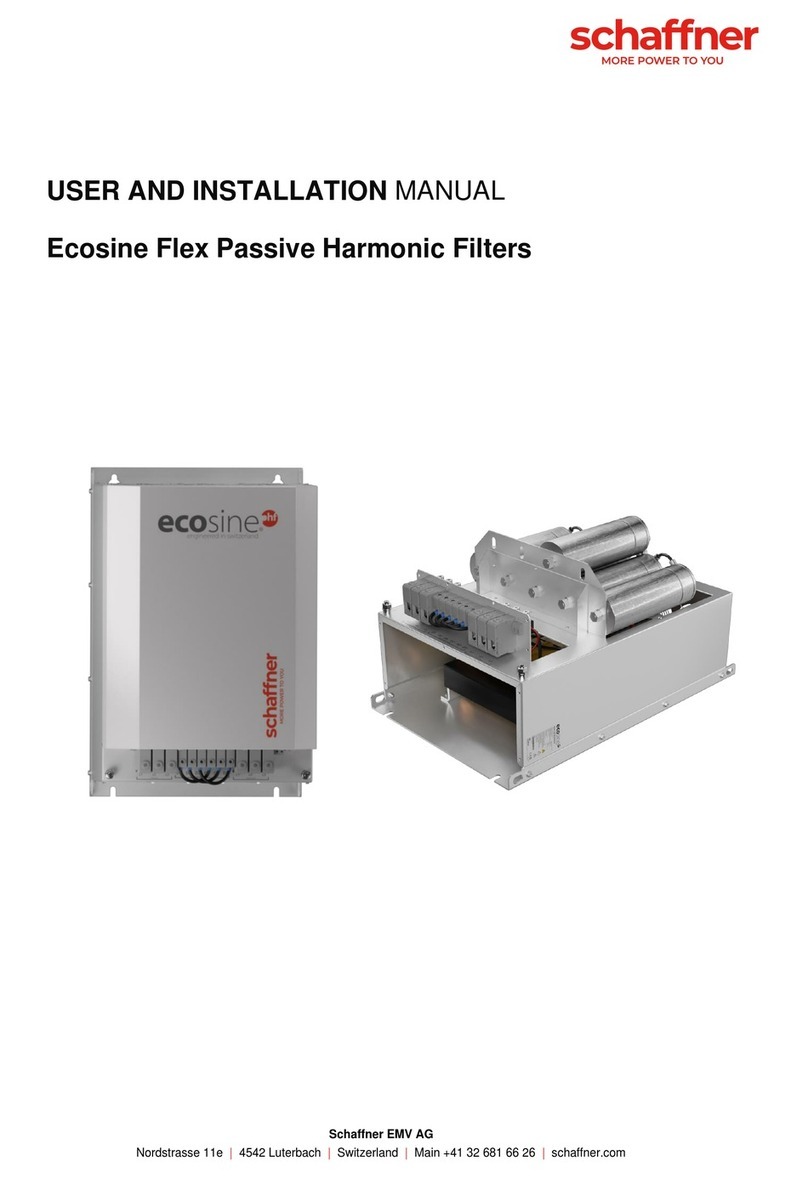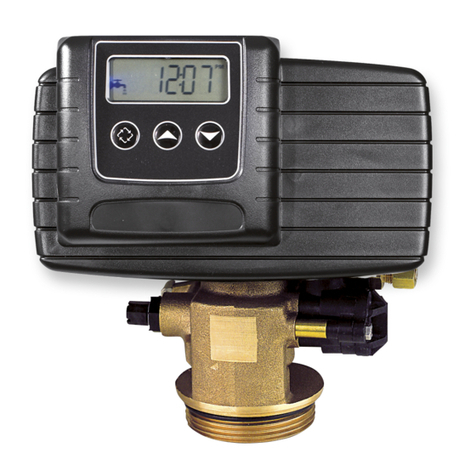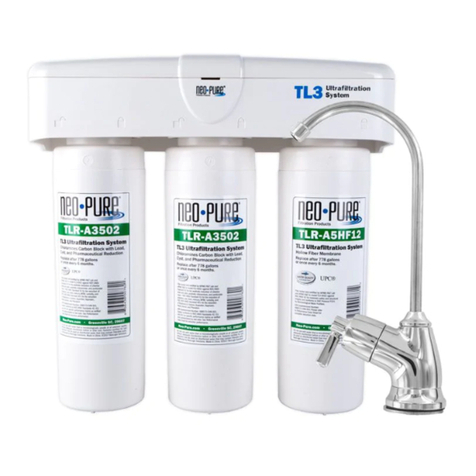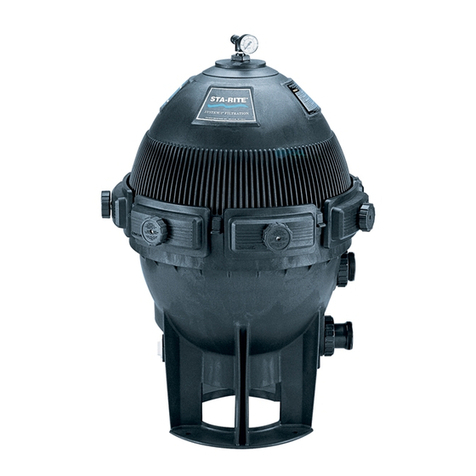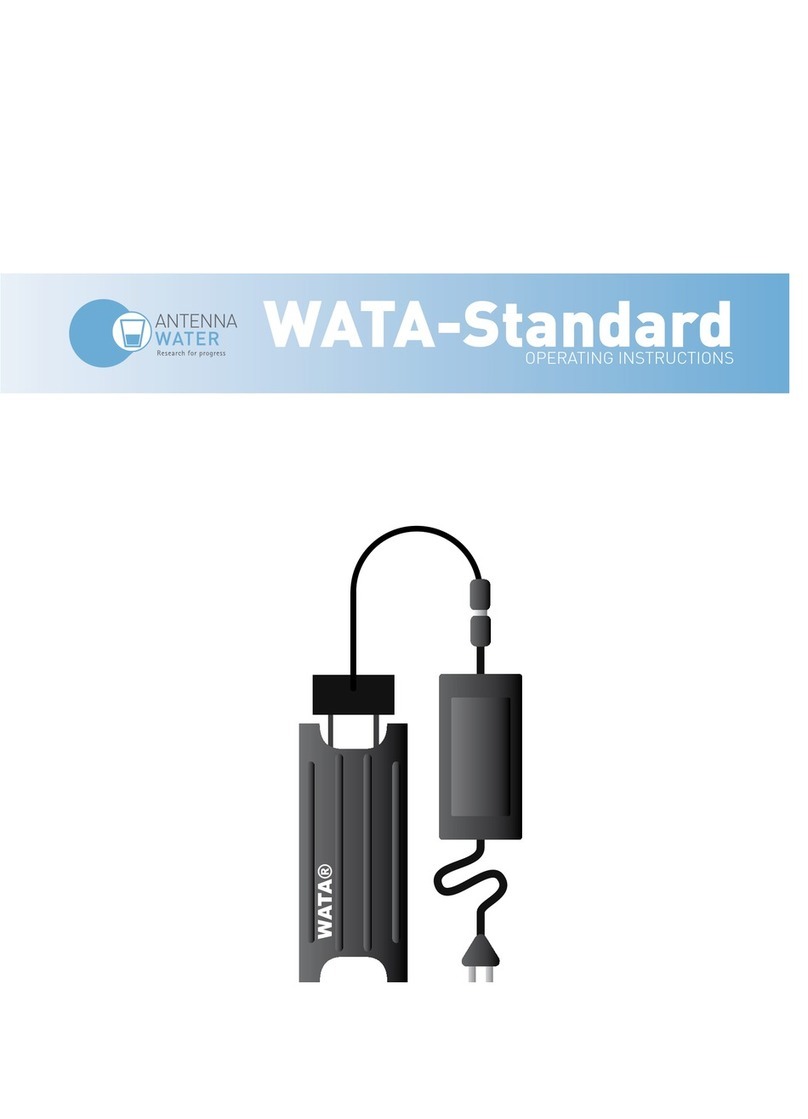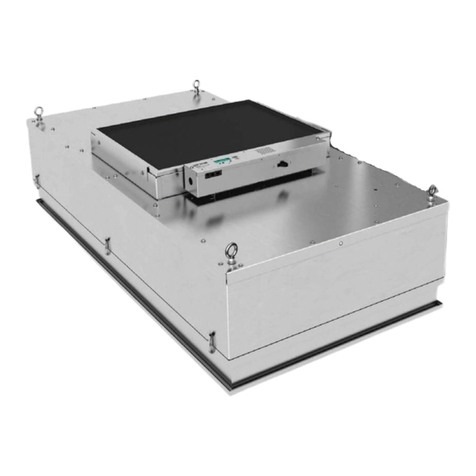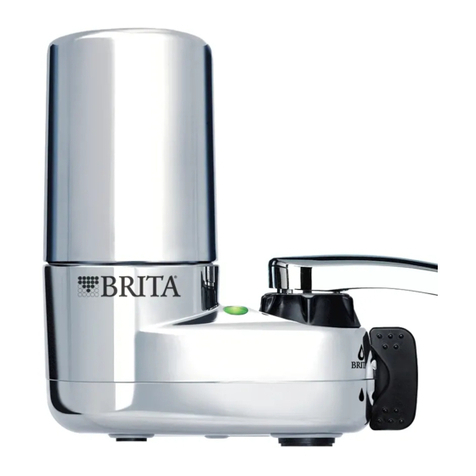
6© Baader Planetarium GmbH | 2021 7
Manual: SunDancer II
Usage without an Energy Rejection Filter
With telescopes with an aperture of
80mm or less and a focal ratio of f/8 or
slower, the SunDancer II can be used
without an energy protection lter (ERF)
in front of the telescope objective. This
makes it a particularly inexpensive and
safe system for H-alpha solar observation,
as you only need one accessory and do
not run the risk of forgetting the D-ERF
front lter.
However, only the observer behind the
eyepiece is safe. When using the telescope
without D-ERF, the tightly bundled light beam is rst reected inside the tube at the
front block lter before the telecentrics and is then deected out of the telescope
towards the front again. Therefor when using the telescope without a D-ERF, make
sure that no one can look into the telescope from the front. The risk is highest with
low-mounted, short-focal length telescopes pointed at a low-elevation sun. The photo
shows the glistening bright reected light beam in front of an 80 mm objective.
You can also use D-ERF lters on smaller telescopes, as they protect the inside of the
tube from the heat of the sun. This has no inuence on the function of the SunDancer II,
but it may affect the tube entrance and thus the possible maximum magnication.
The Telecentric System and Thoughts about the Telescope
The SunDancer II has a built-in 3x telecentric system with an integrated blocking lter.
Similar to a Barlow lens, the telecentric system triples the focal length and effective
focal ratio of the telescope, but unlike a Barlow, it also ensures a parallel beam path.
There is no way that a parallel light beam would result without a telecentric even in a
native f/30-telescope or in a telescope would be brought to this focal ratio with a Bar-
low! A slightly conical beam path with f/30 would give a weaker contrast with an etalon
with 0.5 Å FWHM – comparabable to a lter 0.7 Å FWHM or less. Only a telecentric
system delivers this perfectly parallel beam path, which is essential for the unrestricted
function of an etalon.
The SunDancer II is optimized for an effective focal ratio of f/30, i.e. for telescopes
working natively with f/10. It can be operated on telescopes up to about f/8 (giving an
effective focal ratio of f/24) without too much increase in half-width.
The lter can also be used on faster telescopes with the restrictions mentioned abo-
ve. However, with an effective focal ratio of f/20 or faster (i.e. on f/6.6 telescopes), it is
mandatory to mount a Baader D-ERF lter in front of the lens. In addition, the target
Preparations
Choosing a Dielectric Energy Rejection Filter
A Dielectric Energy Reection Filter
(D-ERF) is used to protect the actual
H-alpha lter from the intense solar
energy. In principle, it is a plano-op-
tically polished lter that only allows
red light in the vicinity of the H-alpha
line to pass and thus ensures that
the actual H-alpha lter does not
become too hot. It does not have to
be as narrow-banded as the actual
H-alpha lter; however, the same
demands are made on its surface
accuracy as on the telescope
objective. A white-light solar lter
(e.g. made of AstroSolar lm) cannot be used for this purpose because it also darkens
the H-alpha line, which is weaker than the rest of the solar radiation.
On all telescopes with more than 80 mm aperture as well as on telescopes with
secondary mirrors (e.g. Newtons or Schmidt-Cassegrains), a D-ERF protective
filter (not included in the scope of delivery) is absolutely necessary for long-term
observations (more than five minutes). A selection of suitable lters can be found
at baader-planetarium.com/derf; a suitable 3D-printed lens mount can be created by
yourself or by various service providers.
These D-ERF lters also serve as UV and IR blocking lters and reect the incident
sunlight instead of absorbing it. If you want to use a smaller D-ERF lter diameter on
an obstructed telescope to simultaneously stop it down to a more favourable focal
ratio, choose the diameter of the D-ERF in such a way that it sits off-centre next to the
secondary mirror in the optical path. Otherwise you will lose aperture if the secondary
mirror sits behind the D-ERF. Do not try to put several smaller D-ERFs next to each
other in order to use more aperture despite having a secondary mirror – this also does
not give satisfactory results.
A suitable mount specically for your telescope can be made by us only if you
purchase a complete system consisting of D-ERF and H-alpha lter. However, this is
relatively expensive due to the design and production time. For a quotation we need
the diameter of the mount with an accuracy of 1/10 mm. Instructions on how to const-
ruct your own mount can be found at baader-planetarium.com/derf.
The lter should be mounted as close as possible to the front of the lens so that no
warm layers of air can accumulate between the lens and the lter and impair the image
quality. Always make sure that the lter is rmly seated to avoid it dropping from the
telescope!
Energy protection filters up to 180 mm aperture can
individually made for your telescope, if necessary also with adjus-
table iris diaphragm or fixed aperture diaphragm.
The concentrated, reflected solar radiation in front of an
80 mm telescope without D-ERF in front of the objective.
Without a D-ERF, never look
into the telescope from the front!
Baader Telezentrische Linsensysteme (TZS) für die
Sonnenbeobachtung mit schmalbandigen H- Filtern
Zur erfolgreichen Sonnenbeobachtung mit schmalbandigen Linienfiltern (Halbwertbreiten unter 1
Angström) der Marken "Solar Spectrum" und "Day Star" ist ein Teleskop mit einem Öffnungsverhältnis
von mindestens f/30 die Voraussetzung. Dieses Öffnungsverhältnis lässt sich entweder durch Abblen-
den der Objektivöffnung –oder vorzugsweise durch Brennweitenverlängerung mit einem "Telezentri-
schen System" (TZS) –erzielen. Telezentrische Systeme sind nicht mit Barlowlinsen gleichzu-
setzen (siehe Grafiken)! Nur mit einem TZS entsteht ein paralleles Strahlenbündel, nur damit ist eine
gleichmäßige Darstellung der chromosphärischen Strukturen über das gesamte Bildfeld des Tele-
skops gewährleistet.
Generell sind nur Refraktoren und katadioptrische Teleskopsysteme mit Hauptspiegelfokussierung
(z.B. Schmidt-Cassegrain Teleskope) zur H-alpha Sonnenbeobachtung geeignet, bei den meisten an-
deren Teleskopsystemen (Newton) steht bauartbedingt der erforderliche Fokussierweg zum Anschluss
des Zubehörs zur H- Beobachtung nicht zur Verfügung.
Einsatz der Telezentrischen Linsensysteme
Es gibt drei verschiedene Telezentrische Linsensysteme. Je nach gegebenem Öffnungsverhältnis des
Fernrohrs kann entweder ein 2-faches, 3-faches oder ein 4-faches TZS in Kombination mit Abblen-
dung der Optik eingesetzt werden, um f/30 zu erhalten. Die Beobachtungsmöglichkeiten und die Fle-
xibilität eines Sonnenteleskops werden jedoch durch den abwechselnden Einsatz der TZS enorm er-
weitert.
Zum Beispiel empfiehlt es sich für Detailbeobachtungen z.B. von Strukturen rund um Sonnenflecken
mit möglichst großer Öffnung (= hohe Auflösung) zu arbeiten während für die Fotografie und Beobach-
tung von Protuberanzen, die durchaus Höhen von mehreren 100.000 km erreichen können, ein gro-
ßes Gesichtsfeld von Vorteil ist.
Das TZ-3 unterscheidet sich von beiden anderen TZ-Systemen dadurch, dass das Linsensystem für
ein H-Etalon mit 46 mm Maximalgröße ausgelegt wurde, um auch die großen Research-Grade-Filter
von SolarSpectrum vollkommen auszuleuchten. Aus diesem Grund ist das Gehäuse auch beidseitig
mit 2" (50.8 mm) Gewinden ausgestattet, und es sind alle Adapter im Lieferumfang enthalten um das
TZ-3 beidseitig an 2" oder an T-2 (M42x0.75 mm) Gewinden anschließen zu können. Alle Solar
Spectrum Filter werden ebenfalls beidseitig mit 2" und mit T-2 Gewinden ausgeliefert.
Strahlengang eines 6"/f6 Refraktors der mit einer 5-fach
Barlowlinse auf f/30 verlängert wurde
Strahlengang eines 6"f/30 Refraktors. Diesen Zustand
stellt das Telezentrische System her!
Telezentrische Systeme TZ-2, TZ-3 und TZ-4
Baader Telezentrische Linsensysteme (TZS) für die
Sonnenbeobachtung mit schmalbandigen H- Filtern
Zur erfolgreichen Sonnenbeobachtung mit schmalbandigen Linienfiltern (Halbwertbreiten unter 1
Angström) der Marken "Solar Spectrum" und "Day Star" ist ein Teleskop mit einem Öffnungsverhältnis
von mindestens f/30 die Voraussetzung. Dieses Öffnungsverhältnis lässt sich entweder durch Abblen-
den der Objektivöffnung –oder vorzugsweise durch Brennweitenverlängerung mit einem "Telezentri-
schen System" (TZS) –erzielen. Telezentrische Systeme sind nicht mit Barlowlinsen gleichzu-
setzen (siehe Grafiken)! Nur mit einem TZS entsteht ein paralleles Strahlenbündel, nur damit ist eine
gleichmäßige Darstellung der chromosphärischen Strukturen über das gesamte Bildfeld des Tele-
skops gewährleistet.
Generell sind nur Refraktoren und katadioptrische Teleskopsysteme mit Hauptspiegelfokussierung
(z.B. Schmidt-Cassegrain Teleskope) zur H-alpha Sonnenbeobachtung geeignet, bei den meisten an-
deren Teleskopsystemen (Newton) steht bauartbedingt der erforderliche Fokussierweg zum Anschluss
des Zubehörs zur H- Beobachtung nicht zur Verfügung.
Einsatz der Telezentrischen Linsensysteme
Es gibt drei verschiedene Telezentrische Linsensysteme. Je nach gegebenem Öffnungsverhältnis des
Fernrohrs kann entweder ein 2-faches, 3-faches oder ein 4-faches TZS in Kombination mit Abblen-
dung der Optik eingesetzt werden, um f/30 zu erhalten. Die Beobachtungsmöglichkeiten und die Fle-
xibilität eines Sonnenteleskops werden jedoch durch den abwechselnden Einsatz der TZS enorm er-
weitert.
Zum Beispiel empfiehlt es sich für Detailbeobachtungen z.B. von Strukturen rund um Sonnenflecken
mit möglichst großer Öffnung (= hohe Auflösung) zu arbeiten während für die Fotografie und Beobach-
tung von Protuberanzen, die durchaus Höhen von mehreren 100.000 km erreichen können, ein gro-
ßes Gesichtsfeld von Vorteil ist.
Das TZ-3 unterscheidet sich von beiden anderen TZ-Systemen dadurch, dass das Linsensystem für
ein H-Etalon mit 46 mm Maximalgröße ausgelegt wurde, um auch die großen Research-Grade-Filter
von SolarSpectrum vollkommen auszuleuchten. Aus diesem Grund ist das Gehäuse auch beidseitig
mit 2" (50.8 mm) Gewinden ausgestattet, und es sind alle Adapter im Lieferumfang enthalten um das
TZ-3 beidseitig an 2" oder an T-2 (M42x0.75 mm) Gewinden anschließen zu können. Alle Solar
Spectrum Filter werden ebenfalls beidseitig mit 2" und mit T-2 Gewinden ausgeliefert.
Strahlengang eines 6"/f6 Refraktors der mit einer 5-fach
Barlowlinse auf f/30 verlängert wurde
Strahlengang eines 6"f/30 Refraktors. Diesen Zustand
stellt das Telezentrische System her!
Telezentrische Systeme TZ-2, TZ-3 und TZ-4
Light beam of a 6"lens telescope, which was
extended to f/30 with a barlow lens
Light beam of a 6"lens telescope, which was
extended to f/30 with a telecentric system
